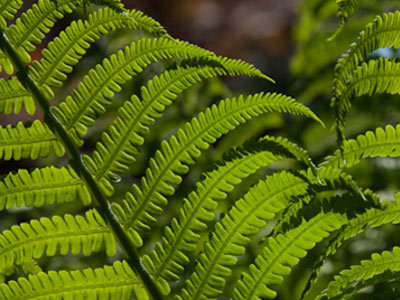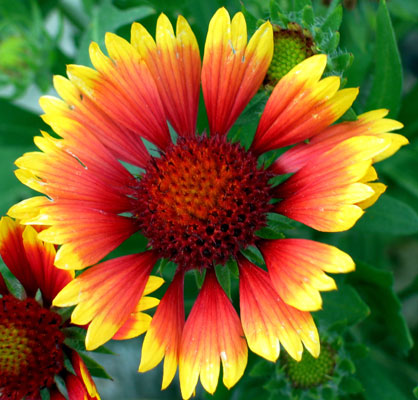Charophyceans -> bryophytes -> pteridophytes -> gymnosperms -> angiosperms.
Charophyceans: algae
In the water, algae were supported. Every cell had contact with the ocean, which brought water and nourishment that could be absorbed through the cell wall. Reproduction was simple: algae released their eggs and sperm cells into the water where they could meet and form tough little capsules called zoospores. On land, all this changed. Algae cast up on the sea shore or trapped in evaporating ponds were subjected to drying winds and often to large temperature swings. At first they probably just died, but over millions of years a few algae were able to resist short periods of dryness and live on. These became the ancestors of our land plants.
Bryophytes: mosses
They form low mats, and the little plants, grouped tightly together, can absorb water like sponges. They do not have roots, although a cell at the bottom of each sprig forms a rhizoid that clings to rocks and other surfaces. Mosses do not have vascular structures (tubes like our veins for moving fluids around inside themselves) , but they do have an effective method of reproduction called alternation of generations. This method protects and nurtures the vulnerable zygote. A zygote is the new cell that is produced by the union of the genetic material from two parents. It is the cell from which a new and unique organism will grow. Mosses found a way to keep the zygote moist and alive. The zygote grows into a structure that makes spores, and the tiny spores float away in the air.
Pteridophytes: Ferns
Ferns are the plants that developed vascular systems. Some ferns still have rhizoids, but they also have roots. This makes it possible for ferns to grow into large plants. Ferns do not have true seeds. They reproduce by alternation of generations. When you turn fern fronds over, you can often see little dots on the underside. These dots are groups of spores. When the dots are brown, the spores are getting ripe and will soon be released from the plant. Spores are tiny, and will float away in the air. Some of them will come down in a new place that is favorable for fern growth.
Gymnosperms: naked seed
The first seed-bearing plants are called gymnosperms. Gymnosperm means "naked seed" because these seeds have only a dry, thin covering instead of a sturdy protective seed coat.One important change was the development of pollen to replace the swimming sperm. Pollen could float on the wind and was not damaged by the dry air. The plants made pollen cones (see picture above) which made only pollen and small, tough woody cones in which the female half of the process could be protected. (See picture with blue-green cones here.) The pollen fell on these woody cones and grew tubes down to find the ovules (eggs). After the eggs were fertilized, they developed and matured in the cone. The seed that resulted could survive drought in a dormant state. It could wait for a favorable season to begin its growth. It had a package of food to draw on when it germinated. These seeds were well adapted to the land.
Angiosperms: flowering seed
About a hundred and thirty million years ago, a new kind of plant appeared. This plant developed two innovations. First, the new plants produced flowers. Flowers allowed the plants to form partnerships with insects, and insects, in exchange for pollen and nectar, greatly increased the efficiency of the plants' pollination.Second, the parent plant provided a protective covering for the seed. Sometimes this covering took the form of a burr or a fruit, which improved the dispersal of the seeds to other places.





No comments:
Post a Comment